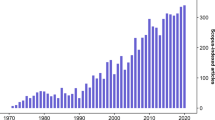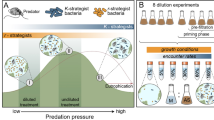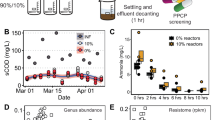Abstract
VARIATIONS in the biological activity of activated sludges have been ascribed to a number of causes, and attempts have been made to relate the presence of characteristic organisms to the activity of the sludge. Reynoldson1 found that under the conditions existing at the Huddersfteld Sewage Works, the logarithm of the Vorticella count in the activated sludge closely followed its biological activity, as measured by the purity of the effluents produced.
This is a preview of subscription content, access via your institution
Access options
Subscribe to this journal
Receive 51 print issues and online access
$199.00 per year
only $3.90 per issue
Buy this article
- Purchase on SpringerLink
- Instant access to full article PDF
Prices may be subject to local taxes which are calculated during checkout
Similar content being viewed by others
References
Reynoldson, T. B., NATURE, 149, 608 (1942).
Pillai, S. C., and Subrahmanyan, V., NATURE, 150, 525 (1942).
Jenkins, S. H., and Roberts, S. J., J. Soc. Chem. Ind., 58, 225 (1939).
Author information
Authors and Affiliations
Rights and permissions
About this article
Cite this article
JENKINS, S. Role of Protozoa in the Activated Sludge Process. Nature 150, 607 (1942). https://doi.org/10.1038/150607c0
Issue date:
DOI: https://doi.org/10.1038/150607c0
This article is cited by
-
Material-engineered bioartificial microorganisms enabling efficient scavenging of waterborne viruses
Nature Communications (2023)
-
Role of Protozoa in the Aerobic Purification of Sewage
Nature (1944)
-
Flocculation of Bacteria by Protozoa
Nature (1943)



